What is it?
The Magnite is Nissan's long-awaited compact SUV. Engineered specifically to meet the exacting needs of Indian car buyers, and to also give Nissan India a much-needed shot in the arm, the Magnite is hopped up on style, heavily loaded with kit, and is seriously good value for money.
Get this; despite the fact that the Magnite can compete feature-for-feature with the best equipped compact SUVs around, introductory prices start at a rock-bottom Rs 4.99 lakh for the entry-level model with the naturally aspirated BR10 1.0-litre engine. And that's not it, fully-loaded Turbo CVT is priced at Rs 9.45 lakh. In comparison, the top-of-the-line 1.0 Kia Sonet automatic goes for almost Rs 13 lakh. Even the top-spec versions of Tata's Nexon automatic and Maruti's Brezza petrol-auto, both relatively cost effective, go for Rs 11.14 lakh and Rs 11.4 lakh, respectively.
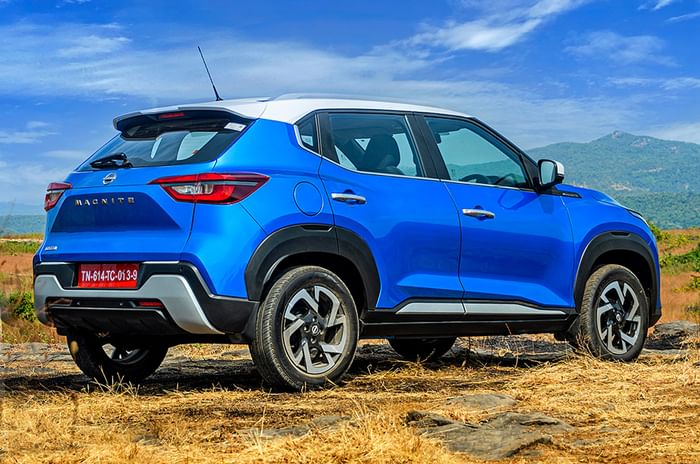
Question is, are we comparing apples with apples here? Is Nissan's Magnite just as accomplished as the competition in other areas, or is it a case of getting a bit less car for a lot less money? Let's put Nissan's make-or-break product, the Magnite, under the microscope.
Nissan Magnite design and styling
It certainly looks the part. The tall stance and generous 205mm of ground clearance give it a genuine SUV vibe. The big chunky wheel arches and 16-inch wheels provide plenty of definition, and the Magnite also has a relatively stand-up cabin for that all-important SUV silhouette. The thick 'C' pillar is well sculpted, the contrast roof and large 'split' rear spoiler looks extremely upmarket, and Nissan has even used a chrome highlight along the doors very effectively. Even the two-tone cladding at the rear is impressively put together.
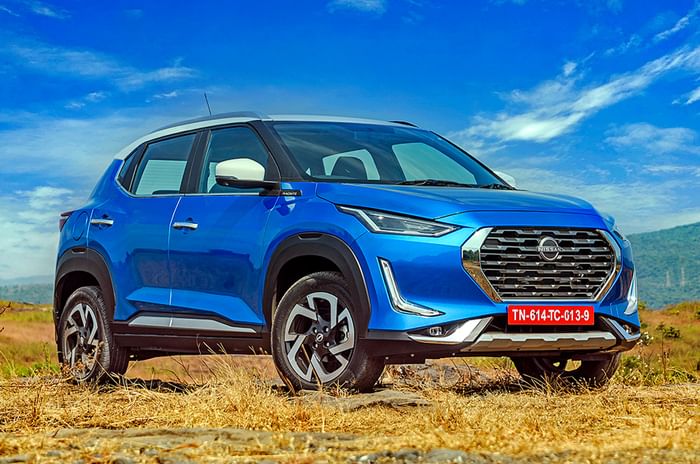
The Datsun grille, integrated into the design of the nose, does point to the fact that this compact SUV started life under Nissan's low-cost brand, but here too there are plenty of interesting flourishes and details. The dagger-like headlights are neat, the 'L' shaped LEDs stand out, and there are a pair of attractive ridges on the bonnet too. While the cladding in general is put together with great precision and the roof rails are also well built, a few difficult-to-ignore panel gaps do exist, especially around the area of the bonnet and the hatch at the rear.
Nissan Magnite platform
The Nissan Magnite is built on the Renault-Nissan alliance's CMF-A+ platform. Larger and clearly more substantial than the regular CMF-A platform that underpins the Datsun Redigo and the Renault Kwid, the '+' is much wider, more robustly put together and longer in beam. The first car to be built on the CMF-A+ was Renault's Triber, and the Nissan Magnite will be followed by Renault's own compact SUV, the Kiger. Built on a 2,500mm wheelbase, par for the course when it comes to compact SUVs, the Magnite is, however, marginally narrower than all others in this class, at 1,758mm. The Magnite's front suspension arm has been optimised for greater stability, there's a new trailing arm setup at the rear, and to counter the 205mm of ground clearance, there's also a new anti-roll bar.
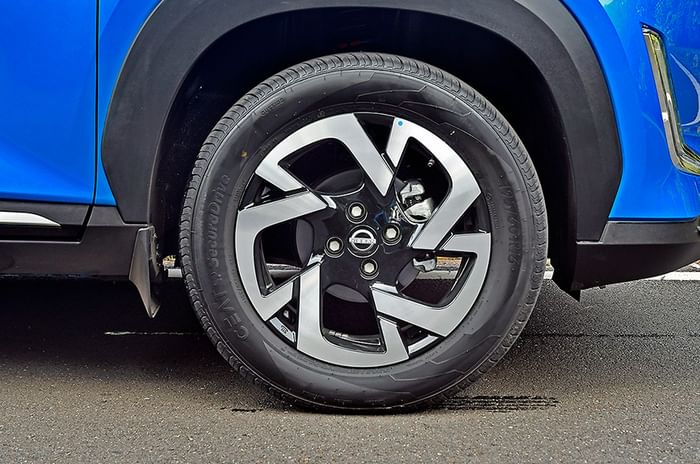
Nissan Magnite 1.0 turbo performance
With its mechanical torque converter equipped CVT or X-Tronic gearbox, a healthy 100hp and only 1,039kg to push around, the automatic-equipped Magnite turbo is the pick of the range. The three-cylinder engine does have a lumpy idle, partly due to its soft engine mounts, and a bit of vibration filters into the cabin, too, but take off from rest and the engine smoothens up nicely. What makes driving the CVT version particularly pleasant is that it responds to a tap on the throttle quite smartly. This makes driving it in traffic feel particularly effortless; press down a bit harder, say to overtake, and acceleration increases in a linear manner too. In fact, at low and medium engine speeds, you don't really suffer too much of the dreaded rubber band effect.
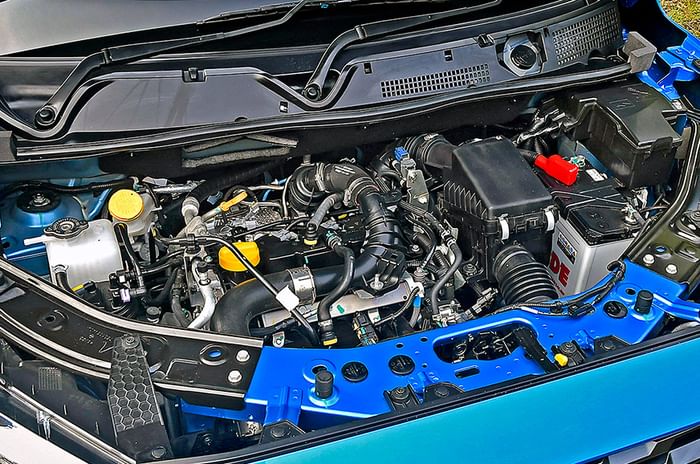
However, pull the CVT-equipped Magnite harder, and with more resolve, and the stretch and strain of the pulleys and belts can be felt. Now the increase in performance is no longer in sync with the increase in engine speed, and while the gearbox does shift in steps, the rubber band effect is evident.
Select 'Sport' on the gear lever, which sharpens the CVT with distinct steps to mimic gear ratios, and you can immediately tell there’s more punch and performance, with the CVT hanging onto a ratio rather than a fixed engine speed.
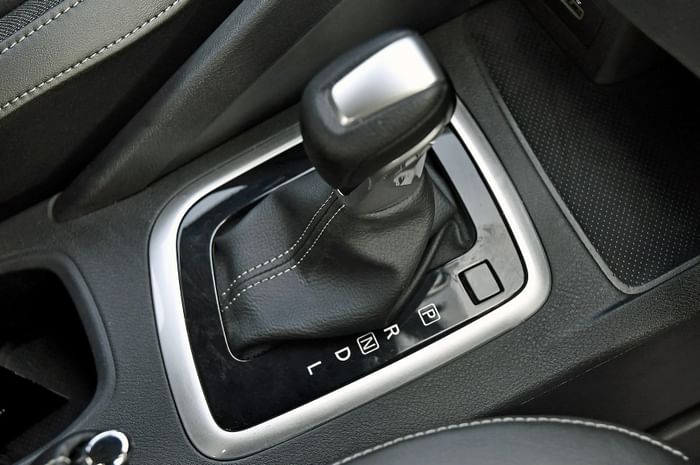
There are no paddles, however, and there's no manual intervention, but with the help of an aggressive take off, the Magnite CVT did manage to do the 0-100kph sprint in 12.8sec. No direct comparison can be made, as this quick test was not conducted to Autocar standards; still, for reference, the Venue 1.0 turbo DCT takes 11.9sec to 100kph. While the gap remains similar when kickdown acceleration is tested from 20-80kph, the Magnite is much closer when 40-100kph times are compared.
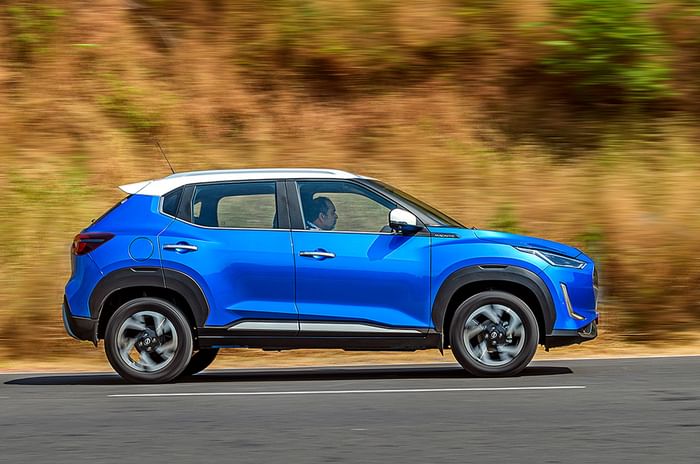
The 5-speed manual equipped Magnite 1.0 turbo is a fair bit quicker against the clock. Again, acceleration times are not to Autocar standards, but for now, the manual provisionally did the 0-100kph sprint in an impressive 11.16sec. That's quicker than the XUV300, Ford EcoSport and also the Venue 1.0 manual, which takes 11.24sec to 100. The 1.0 turbo engine with the manual gearbox does get 160Nm of torque, versus 152Nm for the CVT, and it pulls well all the way from around 1,800rpm to past 6,000rpm in one long, clean sweep. This strong, prolonged push when you are on the throttle is quite pleasing, but you still do miss the turbo coming in with a rush, especially the gratifying step up in power when this happens. And past 5,000rpm, there is a bit of a boom and a thrum.
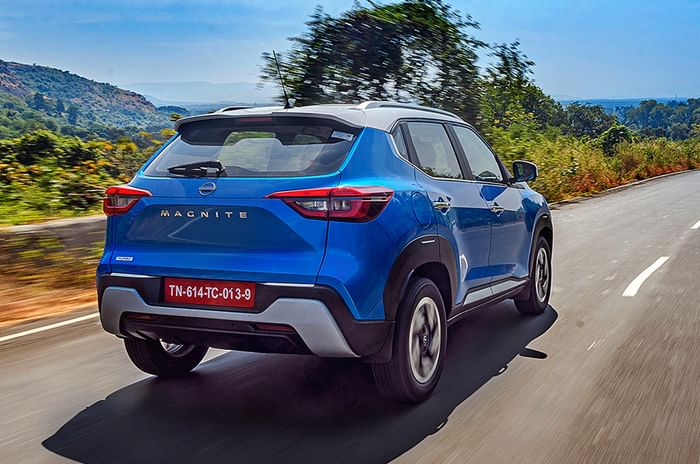
Progression, as you get on and off the throttle in traffic, however, is smooth, unlike cars like the Nexon and Venue, and the engine even pulls reasonably well when off boost.
The 5-speed manual gearbox, however, isn't the slickest unit around. The gate is well defined and the gears slot in well, but you do need to give the gear lever a bit of an extra push. The clutch is a touch heavy too and has a sharp release point, which can make engagement a bit snappy.
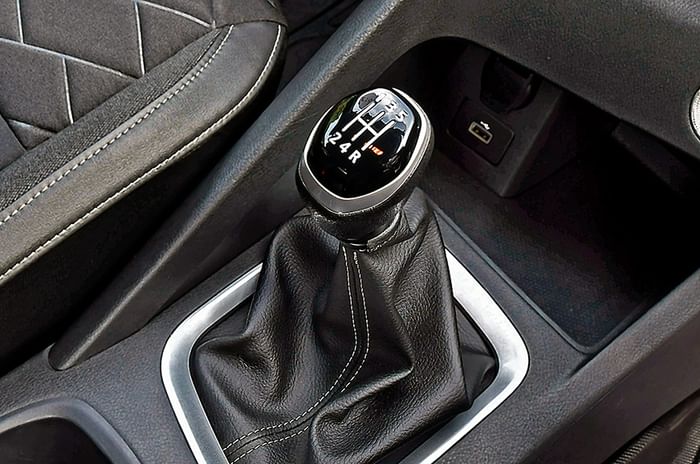
Nissan Magnite handling, stability and ride comfort
Riding on tall and stiff springs, the Magnite's suspension setup is a bit on the firm side, which works well at speed. Straight line stability, as a result, is decent and the weighty steering gives you a fair amount of confidence. The Magnite doesn't feel nervous or hop around when you brake hard either. Agility, however, isn't its forte. Turn in to corners is a bit lazy, and you need some additional steering input at times to get the Magnite smartly into a corner. So, it isn't really an SUV that enjoys carving up corners.
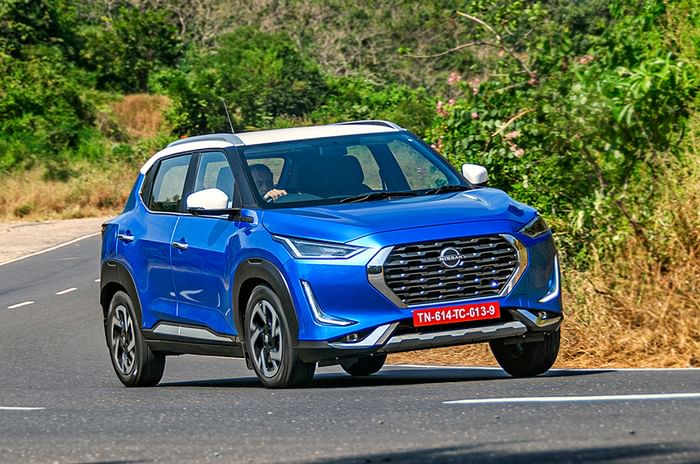
More important, however, is the fact that the steering is easy to twirl at city speeds, the brakes are nicely ‘servoed’ for city use and the Magnite feels at home in the urban environment, which is frankly where it will spend a majority of its time.
The ride, however, is a bit revealing. The Magnite feels unsettled at low speeds over poorly paved patches, the ride is busy for the most part, and then, ever so often, you get a loud 'thwack' from the suspension as you run over a large or medium-sized pothole. While the suspension does absorb some of the larger bumps better at speed, you clearly are aware of the surface below, and there's even a fair amount of road noise, especially over coarse surfaces.
Nissan Magnite space and comfort
While the Magnite is the narrowest car in its class, there clearly is plenty of space and legroom on the inside. The seating position is quite upright, which works well for space efficiency, the long 2,500mm wheelbase liberates a lot of space, and then Nissan has done a superb job of packaging the cabin. The front seats are well bolstered and offer good thigh and shoulder support, and it's quite easy to find a comfortable driving position, despite the fact that the steering doesn't adjust for reach. However, the lumbar support is a bit excessive, and in variants without seat height adjust, the high dash could obstruct the view out for shorter drivers (and front passengers).

Ingress into the rear is easy, thanks to a wide door aperture, and inside there's plenty of legroom even for six-footers. The seatback is a touch upright (to accommodate a bigger boot), but no complaints about thigh support, which is quite good. Headroom, too, is more than sufficient, and since there's only a small hump in the floor, a third passenger can be accommodated quite easily. Even the centre armrest is nicely positioned and the slot for a large mobile phone ahead of the cupholder is a nice touch. You also get adjustable rear headrests at the back, there are rear air-con vents, and although there's no USB socket at the rear, you do get a 12V charging socket.
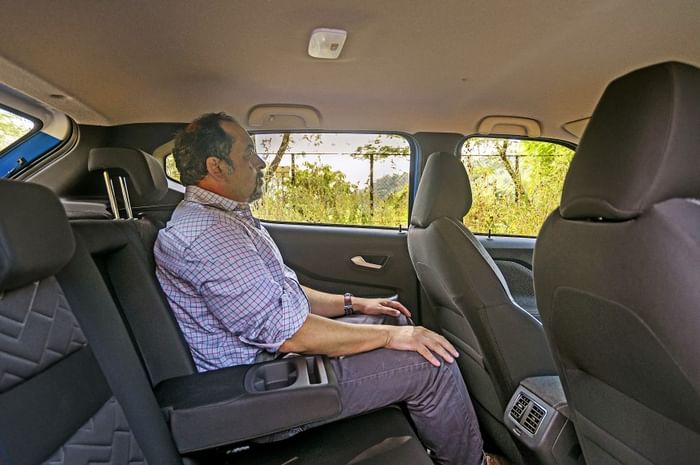
The Magnite also offers a fair size boot, though the Sonet, Venue and Nexon offer larger ones. The tailgate lifts to reveal a deep 336-litre luggage area and there's also the option to split the rear seat 60:40, should you need more space.

Nissan Magnite interior and features
Step into the Magnite and you are immediately aware that Nissan has put a lot of effort and expense into the design and execution of the cabin. Yes, the top of the dash is made of hard (but matte) plastic and the band of piano black that runs across the dash isn't to everyone's taste, but there are still things that catch your eye and impress. These include the Lamborghini Urus-like vents, the large frameless 8.0-inch touchscreen with metal surround, the nicely built air-con knobs with the mini displays inset, the deconstructed centre console, the wireless phone charging system, the TFT screen in the instrument panel that can be cycled through various modes, and even the double-stitched 'denim' on the door pads and elbow rest looks cool. Then there are the quilted cloth and leatherette seats, a massive 10-litre glovebox, and even the steering wheel feels nicely put together.
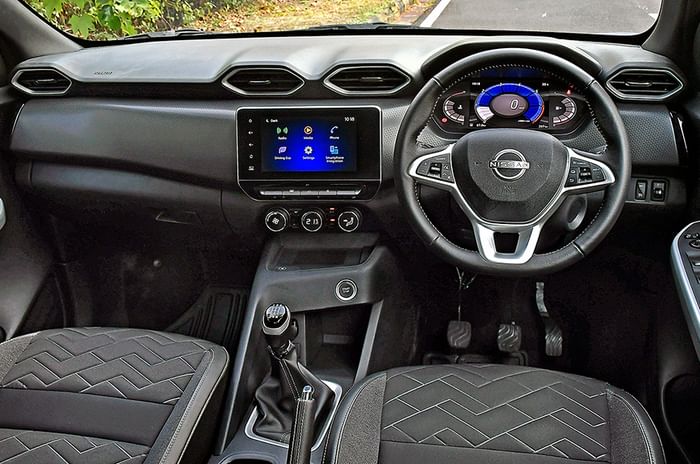
Segment-first features include wireless Apple CarPlay and Android Auto, which feel an absolute treat to use along with the wireless charger, and this is the first car in this class to get a 360-degree reversing camera and display. While the reversing cameras aren't of the highest resolution, and the touchscreen isn't as good as the one on the Hyundai Venue or the Kia Sonet, the system is very intuitive and useable. Nissan Connect and smartwatch connectivity is also available as an option on the turbos. There's no sunroof, but you do get other kit like puddle lamps and a six-speaker audio system. While the Sonet still remains the best equipped car in this class, the Magnite gets a lot of kit, especially when you factor in its price.
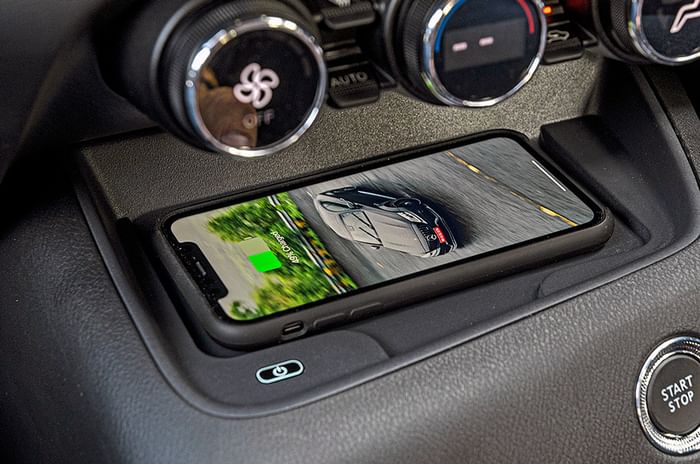
Where the Magnite lags behind its rivals, however, is build quality. Many of the plastic bits in the cabin aren't as robustly built as they should be, the fit in areas is less than perfect, and we even had a few buzzes and rattles on the move from behind the dashboard. While the build strength is much improved over some of the early Datsun products, there clearly is still some way to go.
Nissan Magnite safety equipment
Top versions of the Magnite come with driver aids like Vehicle Dynamic Control, traction control and hill start assist, and also feature ISOFIX child-seat mounts at the back. ABS with EBD, dual airbags and rear parking sensors are standard across the range, and on some variants, you also get a tyre pressure monitoring system and brake assist. The centre passenger in the rear, however, only gets a lap-belt, not a three-point inertia reel seat belt.
Should you buy one?
With its disruptive pricing, the Magnite is all set to attract hordes of potential buyers. On offer is a sharp and modern-looking compact SUV that is comfortable on the inside, well equipped and is easy to drive. However, it may not have the most supple ride, it isn't as entertaining to drive as some of its rivals, and it clearly is not built as robustly as other cars in this class. And then there's Nissan's dealer network, which needs to improve too.
Still, if you are in the market for a compact SUV, and don't mind getting a little less car for a lot less money, keep your eyes glued to the Magnite. This just could be the most disruptive SUV to hit showrooms in a long, long time. Competition, brace for the impact.



































